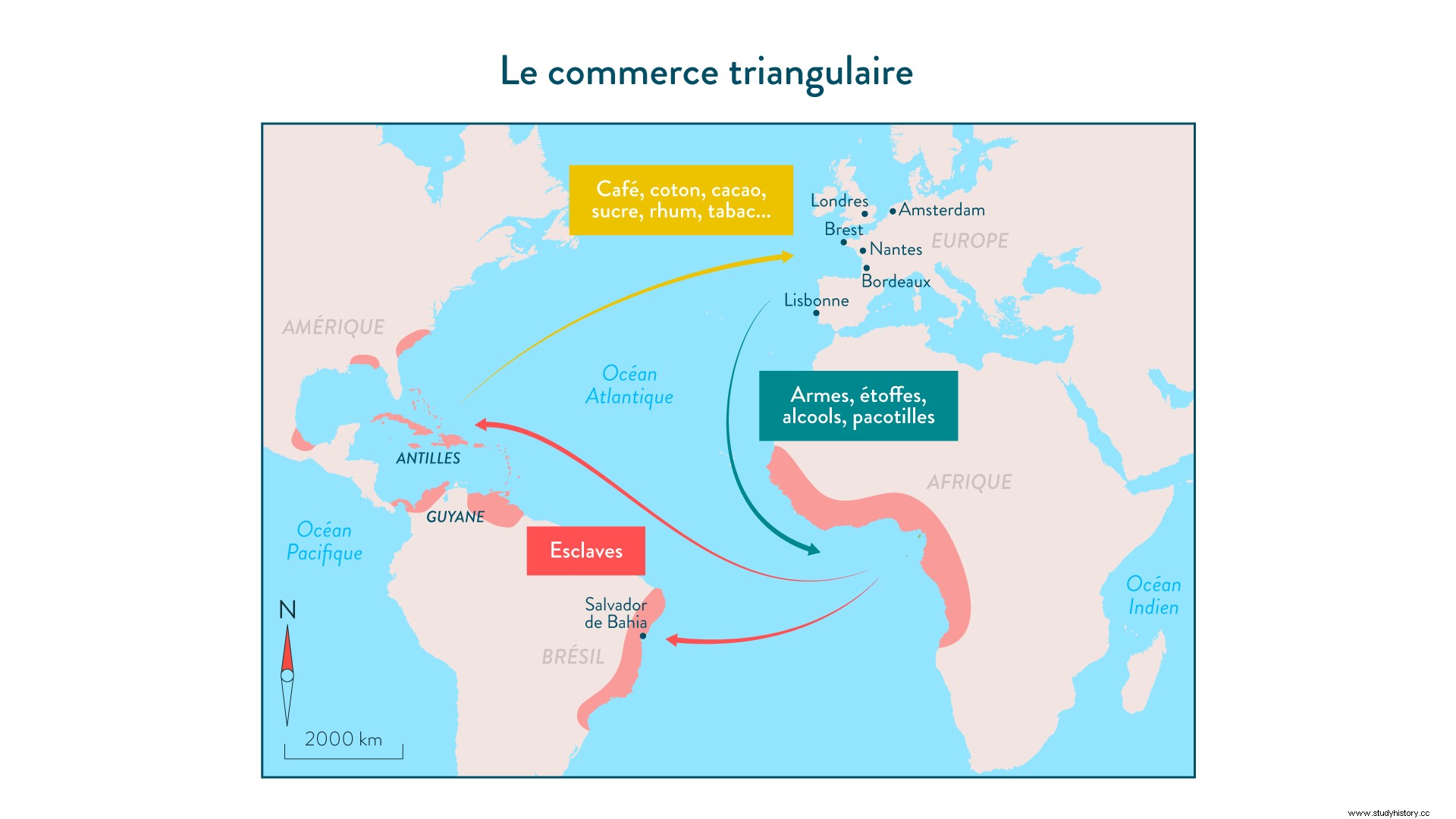- In the 15th th century, the Spanish and Portuguese expeditions made these two powers the first European empires with a powerful maritime fleet. The expedition of Christopher Columbus in 1492 and the discovery of the New World offered new economic prospects for Spain.
- The Portuguese, during their expeditions of discovery, notably traveled along the West African coast:they took black Africans prisoners, who then became slaves. They are used as part of inexpensive labor.
- However, the authorities mainly used initially the populations present on the spot:thus, the Peruvians, or the American Indians, are employed to cultivate coffee, tea, chocolate, sugar and tobacco, foodstuffs which quickly become very popular in the metropolises within the aristocracy and the ruling classes. But the Indians are victims of the microbial shock in contact with Europeans, and the controversy of Valladolid (1550) makes it possible to relieve the fate attributed to the indigenous populations.
XV th century - XIX th century

Procedure
The European powers then turned to Africa. Especially since the French, the English and the Dutch are embarking on the colonial race. Millions of slaves were transported to America at the start of this transatlantic traffic.
It is really between the XVIII th and the 19 th century that the slave trade took on a truly organized form:the "triangular trade" was in full swing. Thus, the slave traders leave the ports of the European powers in the direction of the African coasts. They come to recover the slaves in the counters, and take the direction of the colonies (Guyana, Antilles, America). The slaves are then sold, and the boats leave for the metropolises, loaded with goods.
The plantations require a strong workforce:thus, the traffic is very important:between the XVI e and the 19 th century, the number of slaves torn from their lands is estimated at between 8 and 20 million. The conditions of the crossing are incredibly difficult:the ships are loaded to the maximum. The slaves are piled up and chained, the time of the journey which lasts for months. Overpopulation leads to deplorable hygienic conditions:nearly 2 million slaves die during the crossing. Work in the plantations turns out to be difficult for the Africans who have arrived at their destination:subjection to the masters (surveillance, punishments) and the weight of the tasks often lead to flight.
Consequences
- The slave trade first destabilizes African societies:future slaves are selected during raids in villages. There are also revolts that take place in reaction to the slave trade:in Africa already, the populations are opposed, sometimes violently, to the Africans who make the link with the Europeans.
- The slave uprisings on the American plantations finally lead to a reflection on emancipation. In the 18 th century, the abolitionists are more and more numerous.
